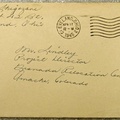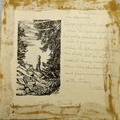On February 19, 1942, President Franklin D. Roosevelt signed Executive Order 9066 which led to the relocation of all 120,000 Japanese Americans living in the Western United States into internment camps. Today, historians consider this blemish in American civil rights to be the defining moment of the Japanese American community.
Despite an overwhelming national distrust in their loyalty, Japanese Americans used the internment camps as a rallying point for unity and justice. This incarceration of Japanese Americans has led to the popular joke that “You know you’re Japanese when you know that ‘camp’ doesn’t refer to a cabin in the woods.” However, for today’s generation of Japanese American youths—who themselves are multiple generations removed from the internment experience—“camp” may in fact refer to the week-long highlight of their summers, ironically, spent in a cabin in the woods.
Each July, over 100 Japanese American youths spend a week together at the Northern California Japanese Christian Church Federation’s Junior High Camp. In August, another 100-plus Japanese American youths attend the United Methodist Church’s Asian American Summer Camp. These young Japanese Americans come from a network of historically Japanese American United Methodist churches located throughout the Western United States.
While the youths attend Junior High Camp and Asian American Summer Camp to grow and develop as young Christians, they are also able to develop lifelong relationships with other Japanese American youths like themselves. As today’s Japanese American youth population is widely dispersed and primarily fourth- and fifth-generation, these youths have few opportunities in their daily lives to interact with other Japanese Americans and establish a group identity. These thriving youth camps present opportunities for young Japanese Americans to define their identity as individuals, as Christians, and as Japanese Americans.
This essay, which is part of a larger study on Japanese American Christian youth, will provide a brief history of some of the Japanese American Christian youth camps, specifically in the United Methodist Church.
The Young People’s Christian Conference
The Northern California Young People’s Christian Conference (commonly referred to as YPCC) was the first Japanese American Christian youth conference and took place on October 24-25, 1925 “to promote leadership, inspire a return to religion and fellowship…[and] share religious experiences and community concern” (Koga 1977, 108).
While it was primarily the effort of Presbyterian missionary Dr. Ernest Adolphus Sturge, the leadership was comprised of Japanese Americans such as Reverend Suzunosuke Kato, who “enabled the second generation to meet and to discuss issues that they faced together as Japanese Americans and as Christians” (Yoo 2002, 132).
By 1926, “sectional YPCC’s began to grow in the Bay Region, Sacramento Valley, Coast Region, Santa Clara Valley and Fresno areas” (“The 40 years I spent at the Lake” 1986). These conferences occurred regularly and fostered the congregation of young Japanese Americans that most likely would not meet otherwise.
YPCC’s popularity peaked during the late 1930s and early 1940s when they attracted 500-800 attendees. Unfortunately, YPCC retreats were put on hold during World War II, since all of the Japanese Americans who would attend the retreats were interned.
The Lake Sequoia Retreat
Immediately after the internment years, young Japanese American Christians in California reestablished their annual retreats. While YPCC retreats continued until the 1960s, a new youth summer camp quickly rose in popularity for Japanese American youths. Former YPCC leaders organized the first annual Lake Sequoia Retreat on August 1-4, 1946.
According to the Lake Sequoia Retreat 40 Year Reunion event program, “the theme of the first camp was ‘Teach Us to Build,’ an appropriate message for young Niseis who were struggling to rebuild their lives in the aftermath of the war.”
In 1960, the Lake Sequoia Retreat attracted 110 Niseis from sixteen churches across Northern California. By the 1970s, the annual camp had grown to over 200 Sanseis—many who were children of the original YPCC or early Lake Sequoia retreats—who came together from all part of California “to deepen one’s spiritual life; to learn to help others to be Christian; and to promote Christian fellowship and friendship.”
The Lake Sequoia Retreat had a history of adapting to the current social needs of its campers. For example, while the early camps addressed postwar Nisei concerns, camp themes in the 1960s and 1970s were conscious of the rising issue of drugs while those of the 1980s spoke to a pan-ethnic Asian American identity.
When the Lake Sequoia Retreat held its last annual camp in the mid-1980s, attendance had declined to around fifty. By then, a demographic shift began to dramatically change the ethnic complexion of Japanese American youths. After three or four generations of acculturation in the United States, rising intermarriage rates, and a heightened ethnic consciousness—as a result of both the emergent field of Asian American Studies and the ongoing struggle for redress and reparations—encouraged young Japanese Americans to begin to explore different routes towards understanding and developing their dynamic ethnic identity.
Despite attempts to continue updating the camp, the Lake Sequoia Retreat eventually gave way to a new, pan-Asian Christian youth summer camp.
To be continued...
© 2011 Dean Adachi





